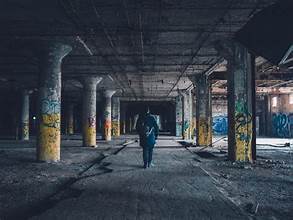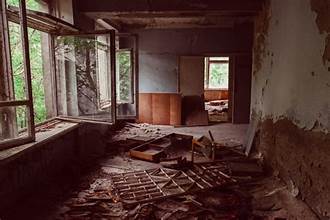
Urban exploration, or “urbex,” is a thrilling activity that involves exploring abandoned or rarely-seen structures, such as old factories, schools, and hospitals. While it offers a unique perspective on forgotten places and can be an exciting adventure, it also comes with significant risks. Whether you’re a seasoned explorer or new to the scene, safety should always be a top priority. Here are some essential safety tips to help you navigate risks and ensure a safe and enjoyable urban exploration experience.
1. Research and Plan Ahead
Before embarking on your urban exploration adventure, thorough research and planning are crucial. Start by gathering information about the site you intend to visit:
- Location and Accessibility: Use online maps and forums to pinpoint the exact location of the site and find the best access points. Understanding the layout can help you avoid potential hazards.
- Legal Considerations: Investigate any legal issues related to exploring the site. Trespassing laws vary by location, and you might need permission from property owners or local authorities.
- Historical Context: Learn about the history of the site to understand its condition and potential dangers. Knowledge about previous uses and renovations can help you anticipate risks.
2. Gear Up Properly
Proper gear is essential for safety and comfort during urban exploration:
- Protective Clothing: Wear durable, long-sleeved clothing and sturdy, high-top boots to protect against sharp objects, chemicals, and uneven terrain. Gloves can also help shield your hands from cuts and contaminants.
- Lighting Equipment: Bring a high-quality flashlight or headlamp with extra batteries. Many abandoned places lack natural light, and a reliable light source is vital for navigating safely.
- First Aid Kit: Always carry a basic first aid kit that includes items like bandages, antiseptic wipes, and pain relievers. In case of minor injuries, having first aid supplies can be a lifesaver.
3. Stay Aware of Your Surroundings
While exploring, constant vigilance is necessary to avoid accidents and hazards:
- Structural Integrity: Be cautious of unstable floors, ceilings, and walls. Abandoned buildings can suffer from decay and deterioration, making some areas unsafe.
- Hazardous Materials: Look out for hazardous substances such as asbestos, lead, and mold. Avoid touching or inhaling potentially dangerous materials, and if possible, wear a mask for added protection.
- Pests and Wildlife: Be aware of potential wildlife or pests, such as rats, insects, or stray animals. These can pose health risks or even be aggressive if threatened.
4. Bring a Companion
Exploring abandoned places alone can be risky. Always bring a companion for added safety:
- Shared Responsibility: Having a partner allows you to share responsibilities, such as navigating and keeping an eye out for dangers. In case of an emergency, having someone with you can be crucial.
- Emergency Contact: Ensure that someone outside of your exploration group knows your plans and expected return time. This way, if something goes wrong, there is a point of contact who can alert authorities if needed.
5. Follow Safe Practices
Adopting safe practices during your exploration can prevent accidents and injuries:
- Avoid Risky Behaviors: Do not climb on unstable structures, and avoid running or making sudden movements. Take your time and move cautiously through the site.
- Respect the Site: Leave the site as you found it. Avoid vandalism or removing artifacts, which can not only be illegal but also disrespectful to the historical significance of the place.
- Emergency Plan: Have a plan in case of emergencies. Know the quickest way out of the site and have a communication strategy in place to contact help if needed.
6. Document Responsibly
Capturing the experience through photos or videos can be a rewarding part of urban exploration, but it should be done with care:
- Camera Equipment: Use lightweight, easy-to-carry camera equipment. Be mindful of the settings and ensure you’re not disturbing the site with bright flashes or loud noises.
- Privacy and Safety: Avoid photographing sensitive areas or individuals. Respect the privacy of others who might be in the area, and be discreet to avoid attracting unwanted attention.
7. Be Prepared for Weather Conditions
Weather can significantly impact your exploration experience. Be prepared for varying conditions:
- Weather Forecast: Check the weather forecast before heading out. Rain, snow, or extreme temperatures can affect your safety and the condition of the site.
- Appropriate Clothing: Dress according to the weather conditions. Waterproof clothing and layers are recommended for unpredictable weather.
8. Know When to Turn Back
Sometimes, the best decision is to cut your exploration short:
- Assess Risks: If you encounter a situation that seems too dangerous or if the site conditions worsen, do not hesitate to leave. Your safety should always come first.
- Listen to Your Instincts: Trust your instincts. If something feels off or unsafe, it’s better to err on the side of caution and exit the site.
Conclusion
Urban exploration can be an exhilarating way to uncover hidden gems and learn about the past, but it’s essential to prioritize safety. By researching and planning ahead, equipping yourself properly, staying aware of your surroundings, bringing a companion, following safe practices, documenting responsibly, preparing for weather conditions, and knowing when to turn back, you can navigate the risks associated with exploring abandoned places. Remember, safety is the key to ensuring that your urban exploration adventures are both exciting and secure.




